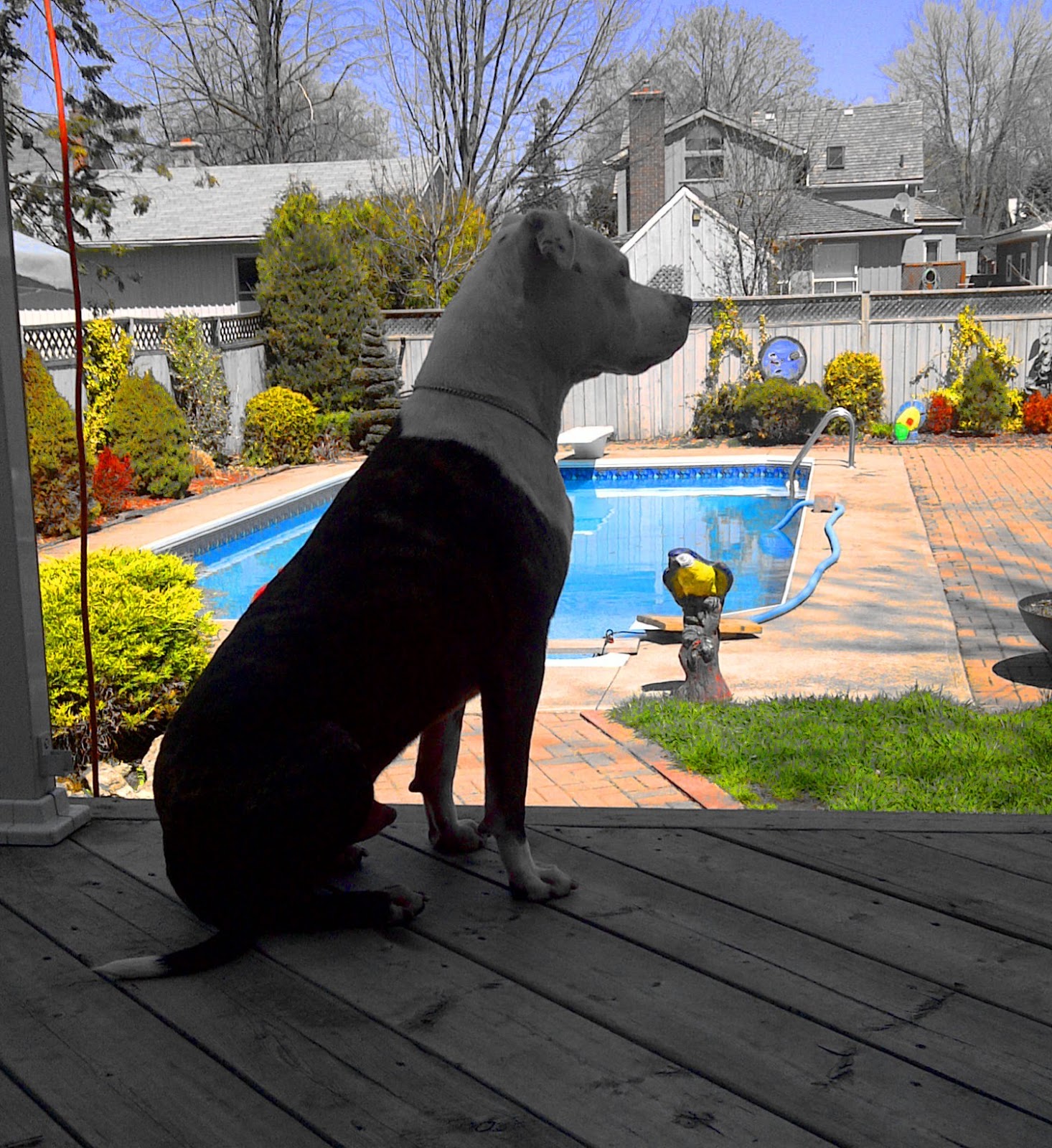Last year I was shocked at the number of news reports of dogs dying after being left in cars on hot summer days. Although there are no official numbers, many veterinarians estimate there are hundreds of these tragic deaths every year.
Dogs do not have the ability to sweat like humans do and therefore, have a much more difficult time cooling their bodies down naturally. Brachycephalic dogs like bulldogs, Boston Terriers, Pugs, Boxers etc. have an even more difficult time as they do not pant as well as dogs with longer noses. The normal body temperature of a dog is between 100 and 102.5 degrees. When your dog's body temperature reaches or exceeds 109 degrees, they have reached a critical stage and heatstroke has occurred. According to Dr. Karen Becker, at this point the body rapidly begins to shut down, the brain swells, which causes seizures, ulcers develop due to the lack of blood supply to the GI tract and irreversible kidney damage occurs, all within a matter of minutes. This is a horrible way for anyone to die.
A dog stuck in a hot car, even with the windows rolled down and even when the car is parked in the shade, can rapidly succumb to heatstroke. The internal temperature of a vehicle will be anywhere from 10 to 20 degrees higher than the temperatures outside. On a 29 degree (Celsius) day, it takes a matter of approximately 10 minutes for the inside of the car to reach 70 degrees and within 30 minutes it can reach 88 degrees. It literally takes minutes for your dog to develop heatstroke inside a car, so if you have to take your dog out on a hot day, make sure you do not have to stop anywhere that will require you leaving your dog in your car, for any length of time.
Even the most fit dogs can succumb to heatstroke within a matter of minutes and older pets, or pets with compromised immune systems are at even greater risk. Always make sure your dog has a place to cool down and lots of water available. A child's swimming pool or a sprinkler system are great ways to cool your dog down on hot days.
WATER INTOXICATION
It was not until I brought my boy Arthur home and found out he loved the water, that I found out about water intoxication. This is another condition, which progresses quickly and can take the life of your dog in a very short period of time.
Water intoxication occurs when your dog swallows too much water while swimming. Although it is rare, it is something dog owners should be mindful of, especially if you have a dog like my Arthur, who will not come of the water willingly.
Symptoms of water intoxication include lack of coordination, lethargy, nausea, vomiting, dilated pupils, glazed eyes, pale gums and excessive salivation. Advanced symptoms include difficulty breathing, collapsing, loss of consciousness and seizures.
Keeping your dog's swimming sessions short and making sure they are receiving frequent breaks in between is the best way to avoid water intoxication. If you suspect your dog may have developed water intoxication get him/her to a veterinarian immediately.
OTHER WATER DANGERS
I always wanted a dog who loved the water, as all of the other dogs in my life were terrified or completely uninterested in swimming, and I got more than I wished for in Arthur.
Many lakes, rivers or ponds can be contaminated by bacteria and parasites. Be sure you investigate the areas where you take your dog to swim. Ask your city or town officials if there has been any water testing in those areas.
Drowning is a danger we are all aware of and every year many dogs die as a result of accidental drowning. Certain dogs are not very good swimmers and some dogs cannot swim at all, but even the strongest swimmers can find themselves in danger if they get too tired in the water.
BEE STINGS AND ALLERGENS
Although most dogs who are stung by bees mostly only suffer from the initial sting and the discomfort that will follow. Just like with humans, some dogs suffer from bee sting allergies and will go into anaphylactic shock after being stung.
If you suspect your dog has been stung by a bee and he/she is exhibiting any signs, get them to the veterinarian immediately. Symptoms can include excessive drooling, scratching of the face, vomiting, diarrhea, swelling, difficulty breathing and/or swallowing, weakness/lethargy and collapse and seizures.
Many dogs are allergic to different types of grasses, trees, pollens and many other things. Although these are not specifically dangerous to your dog, they can cause great discomfort. Regular baths with a gentle shampoo will help ease your dog's discomfort. Keep wipes on hand and make sure you wipe your dog down when you bring them inside, in order to remove any allergens from their skin.
The summer is a wonderful time for everyone but it comes with lots of dangers too. Make sure you leave your dog at home on hot days, keep him cool when you can't and enjoy a safe and happy summer with your pooch!
You can join my Facebook Page @https://www.facebook.com/PawsitiveWellness?ref=hl
And follow me on Twitter @pawsitivebonds











